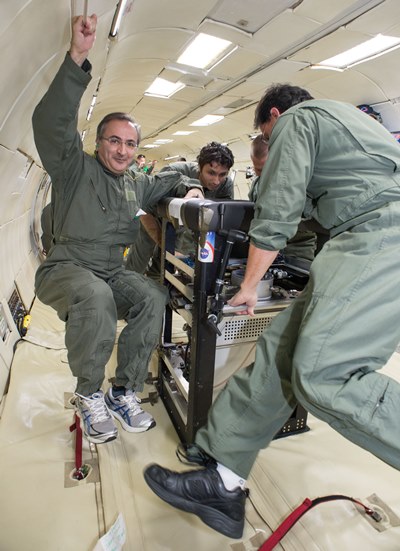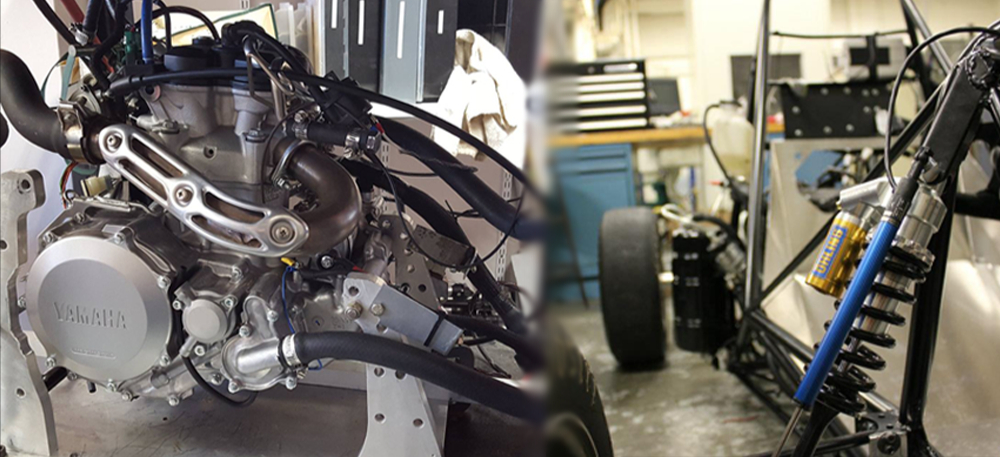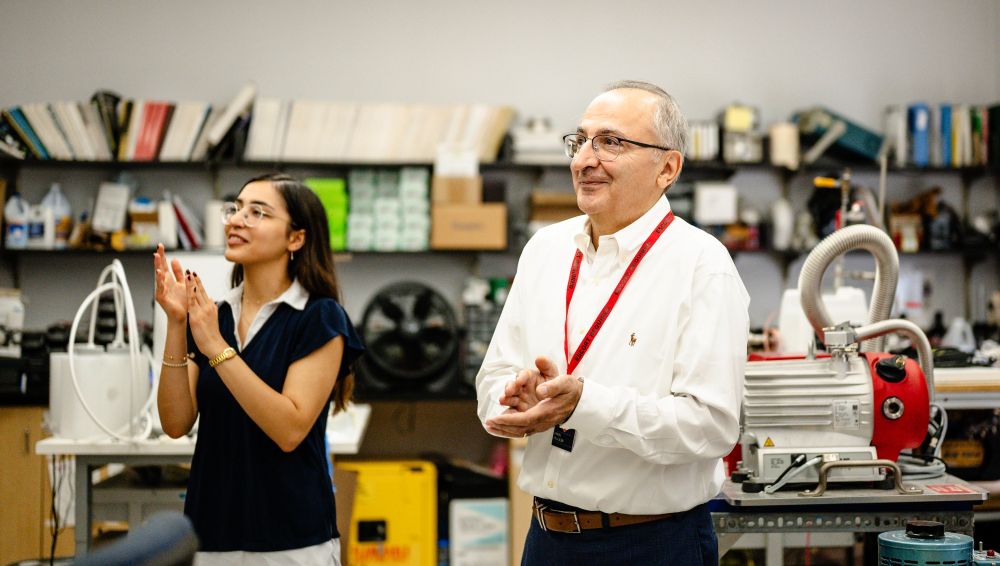
Jamal Yagoobi, left, floats beside a prototype of the EHD pump during a test on the Vomit Comet.
In space, it’s hard to keep your cool—especially if you’re a high-powered electronic device. Much of the electronic hardware found in modern satellites and space vehicles generates considerable heat. If not adequately removed, that heat can impair the performance of these devices or even cause them to fail.
For many years, NASA has been in search of a new way to deal with that heat to improve the performance and reliability of electronics in its satellites, planetary robots, and manned platforms, including the International Space Station. As with all space hardware, the solution should use little electric power, be lightweight, and have few moving parts, which could create noise and vibrations.
A promising answer has emerged from work conducted over the past decade by a research team led by Jamal Yagoobi, professor and head of WPI’s Department of Mechanical Engineering. (Yagoobi is also director of the new National Science Foundation-funded Center for Advanced Research in Drying.)
With continuous support from NASA over that period, and working in collaboration with researchers at the agency’s Goddard Space Flight Center in Greenbelt, Md., and its Glenn Research Center outside Cleveland, Yagoobi and the team in his Multi-Scale Heat Transfer Laboratory have developed a novel cooling technology that appears to meet all of NASA’s requirements. After extensive testing on the ground and in the air, the innovation will fly aboard the International Space Station later this decade.
 The mission patch for the planned test of the
The mission patch for the planned test of the




